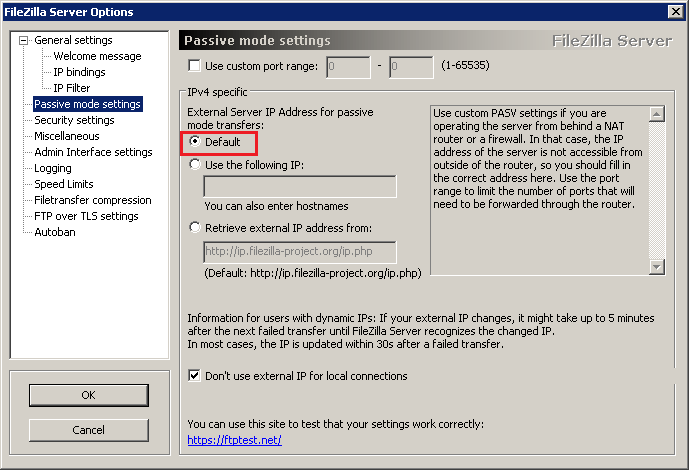


This value sets the range of ports available for use.
#Go ftp try changing to passive mode free
The operating system does not release a port immediately after a user disconnects, so the free port does not become available for another connection immediately. If the port range is too small or equal to the number of expected number of connections, a port to connect might not be available when needed.Specify ports for five times the expected number of concurrent connections based on the following considerations: For example, the base port is set to 10000 and the number of ports is set to 1024, the FTP server can use only the ports from 10000 to 11023 for passive mode data connections. The number of ports specifies how many open ports to allocate. The base port represents the number of the first port available for the FTP server to use for a passive mode data connection. Do not use these ports for any other service. Make sure the ports are accessible through the firewall. You specify a passive mode base port and a number of ports that can be used for passive mode.

You might wish to take the opportunity to change your users to SFTP, a much nicer protocol.If an FTP client is behind a firewall that does not permit SecureTransport to open a data port as required by active mode FTP, you use the passive mode options to configure the FTP server to accept passive mode FTP connections. To do both commands to use new ports on both ends of the data Is defined by the pair of addresses, either of these actions isĮnough to get a different data connection, still it is permitted Server side data port with the PASV command. User-PI may request the server side to identify a non-default Non-default user side data port with the PORT command. Negotiating Non-Default Data Ports: The User-PI may specify a User-PI may initiate the use of non-default ports. Support use of the default data connection ports, and only the DATA CONNECTION MANAGEMENT Default Data Connection Ports: All FTP implementations must The server-process defaultĭata port is the port adjacent to the control connection portģ.3. The user-process default data port is the same as theĬontrol connection port (i.e., U). Both the user and the server-DTPs have a defaultĭata port. ESTABLISHING DATA CONNECTIONS The mechanics of transferring data consists of setting up the dataĬonnection to the appropriate ports and choosing the parametersįor transfer. Does your firewall allow outgoing connections from port 3520 as well?ģ.2. FTP Active Mode by definition requires the server to initiate its outgoing connections from port L-1.


 0 kommentar(er)
0 kommentar(er)
